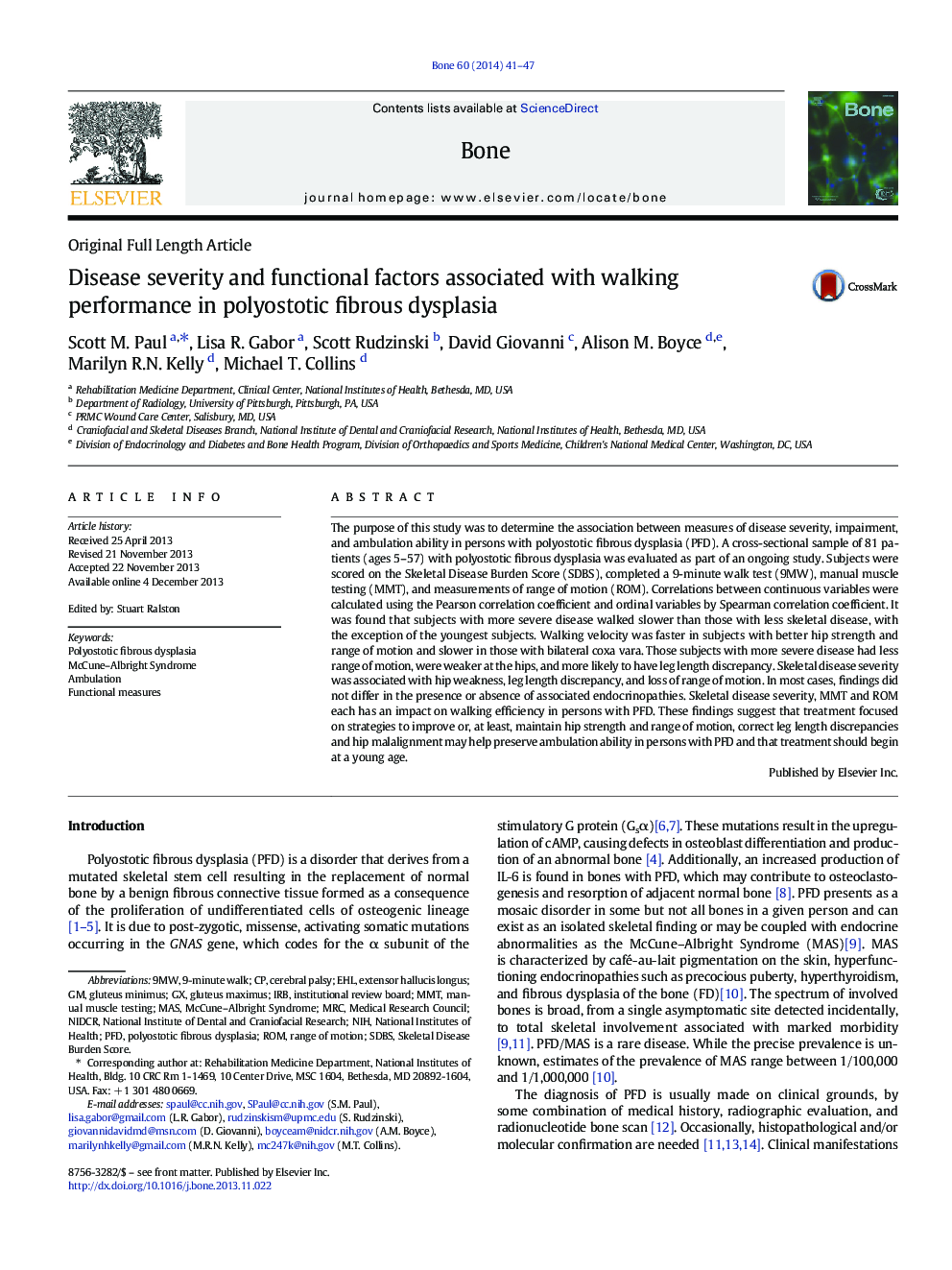| کد مقاله | کد نشریه | سال انتشار | مقاله انگلیسی | نسخه تمام متن |
|---|---|---|---|---|
| 5890412 | 1568159 | 2014 | 7 صفحه PDF | دانلود رایگان |
- The ability to ambulate is adversely affected by skeletal disease severity, especially in children.
- The hip was the lower limb joint whose function was most significantly impacted by the extent of PFD.
- Treatment focused on improving hip strength and range of motion may help preserve ambulation ability in persons with PFD.
- Part of targeted treatment of persons with PFD should include correction of leg length discrepancies and hip malalignment.
The purpose of this study was to determine the association between measures of disease severity, impairment, and ambulation ability in persons with polyostotic fibrous dysplasia (PFD). A cross-sectional sample of 81 patients (ages 5-57) with polyostotic fibrous dysplasia was evaluated as part of an ongoing study. Subjects were scored on the Skeletal Disease Burden Score (SDBS), completed a 9-minute walk test (9MW), manual muscle testing (MMT), and measurements of range of motion (ROM). Correlations between continuous variables were calculated using the Pearson correlation coefficient and ordinal variables by Spearman correlation coefficient. It was found that subjects with more severe disease walked slower than those with less skeletal disease, with the exception of the youngest subjects. Walking velocity was faster in subjects with better hip strength and range of motion and slower in those with bilateral coxa vara. Those subjects with more severe disease had less range of motion, were weaker at the hips, and more likely to have leg length discrepancy. Skeletal disease severity was associated with hip weakness, leg length discrepancy, and loss of range of motion. In most cases, findings did not differ in the presence or absence of associated endocrinopathies. Skeletal disease severity, MMT and ROM each has an impact on walking efficiency in persons with PFD. These findings suggest that treatment focused on strategies to improve or, at least, maintain hip strength and range of motion, correct leg length discrepancies and hip malalignment may help preserve ambulation ability in persons with PFD and that treatment should begin at a young age.
Journal: Bone - Volume 60, March 2014, Pages 41-47
